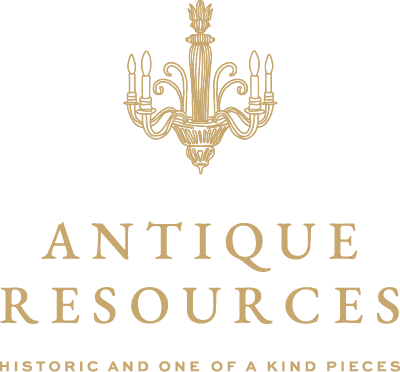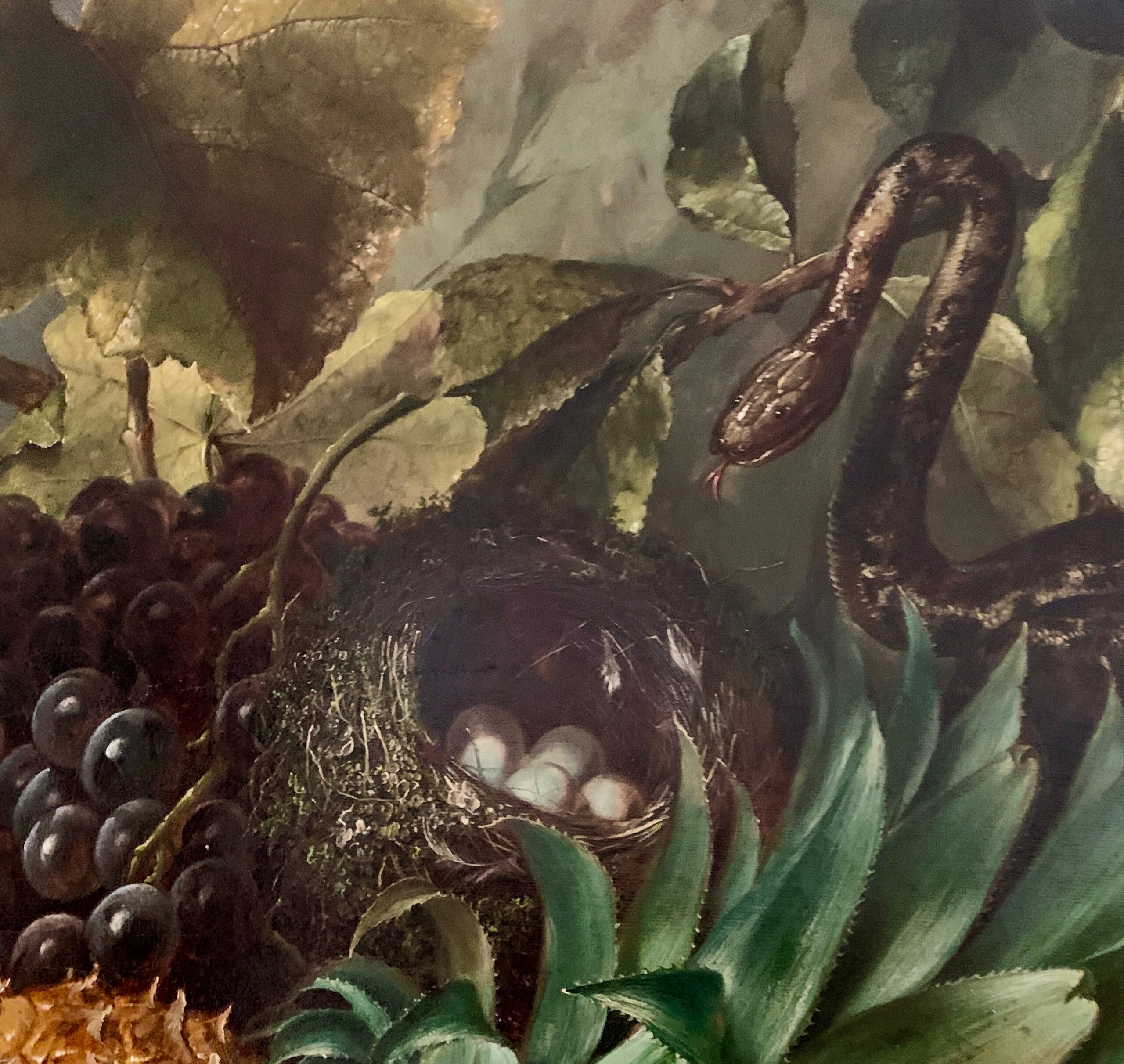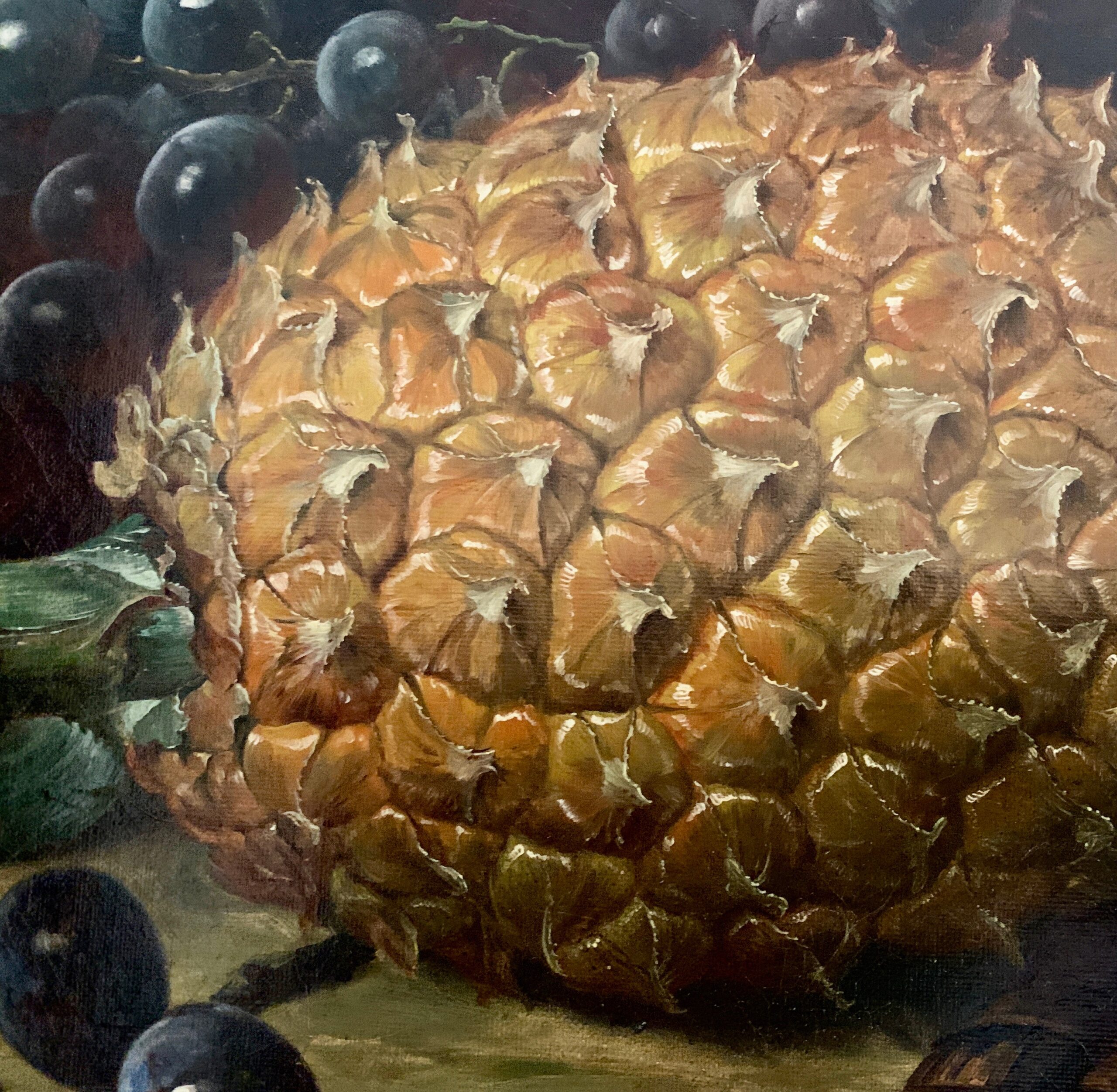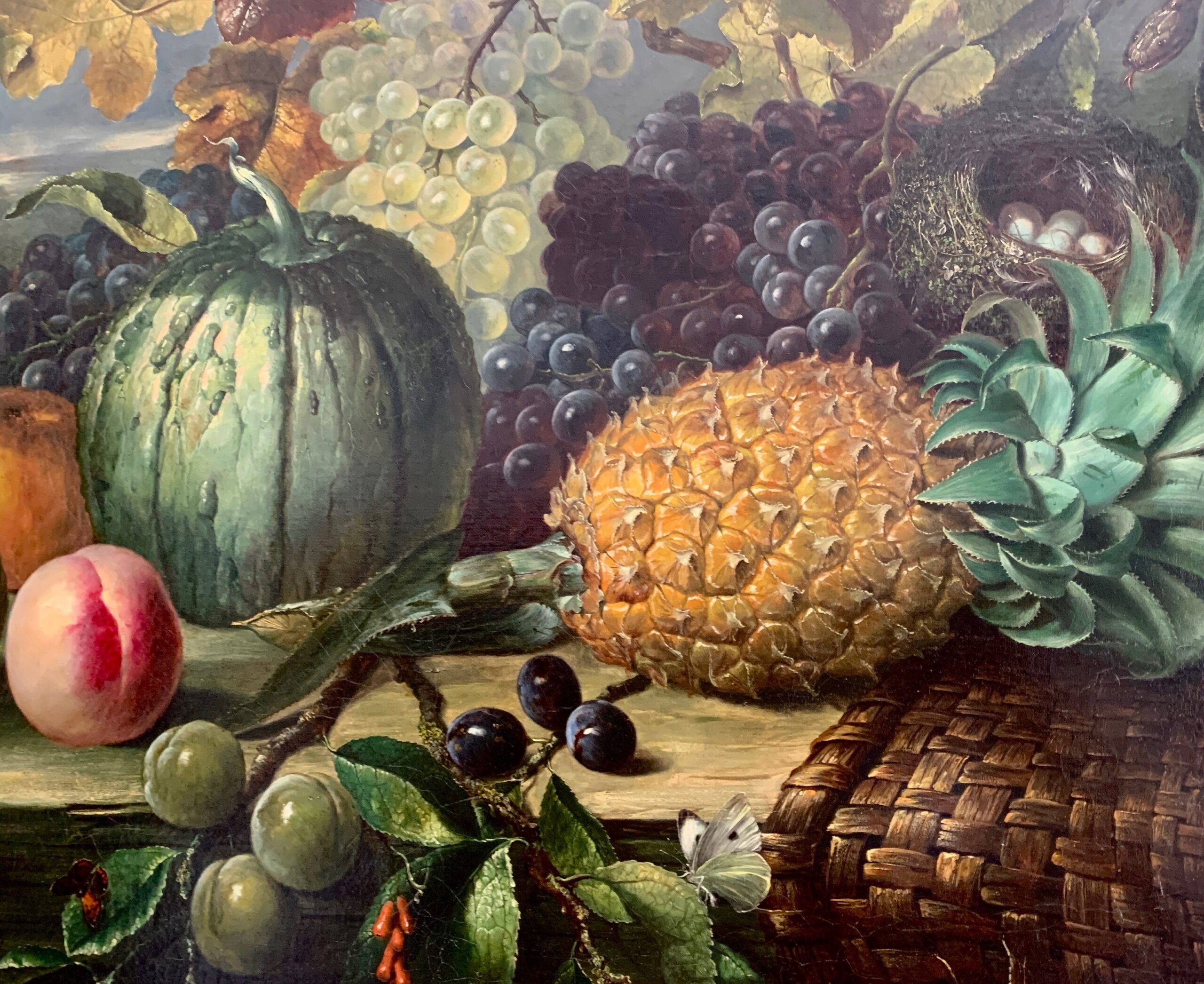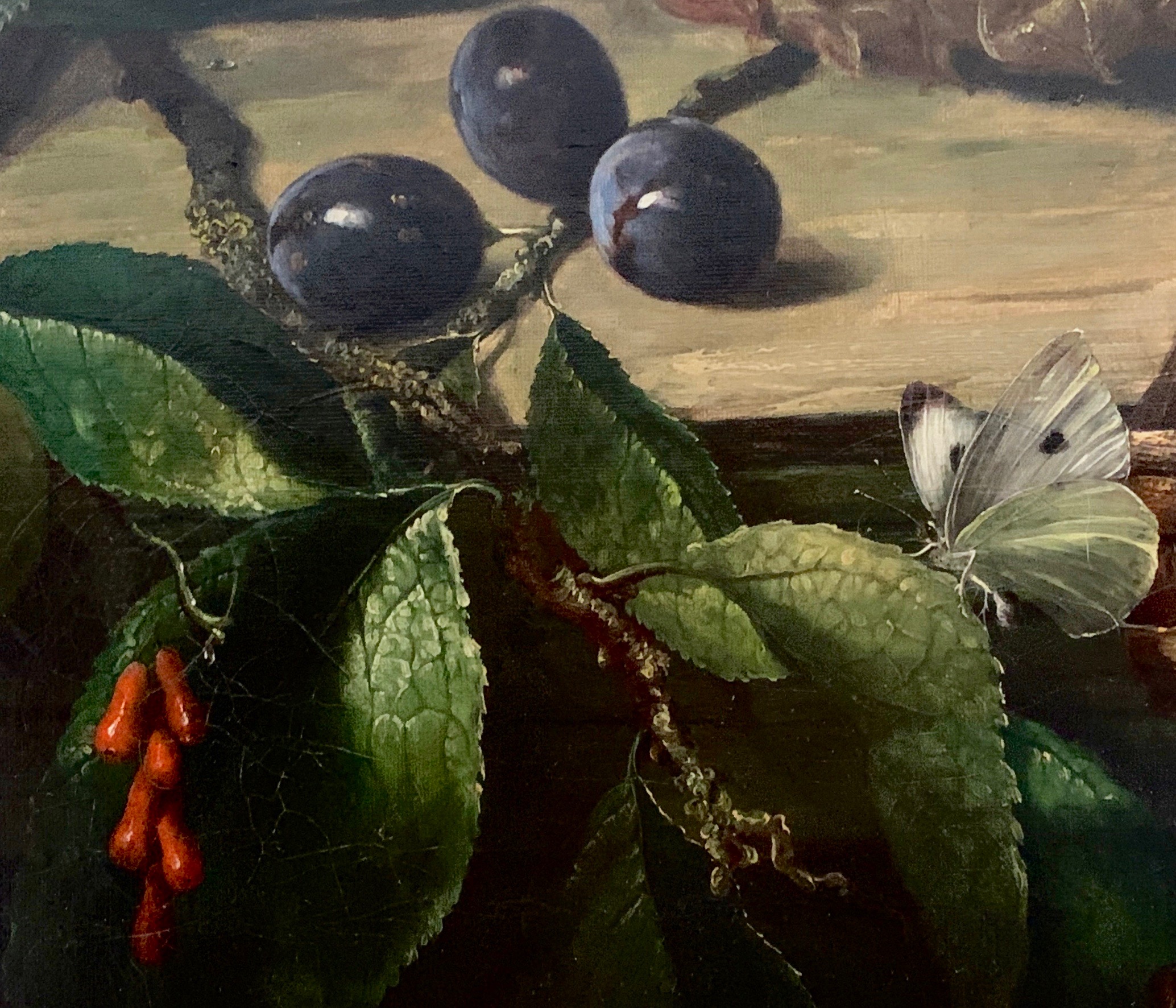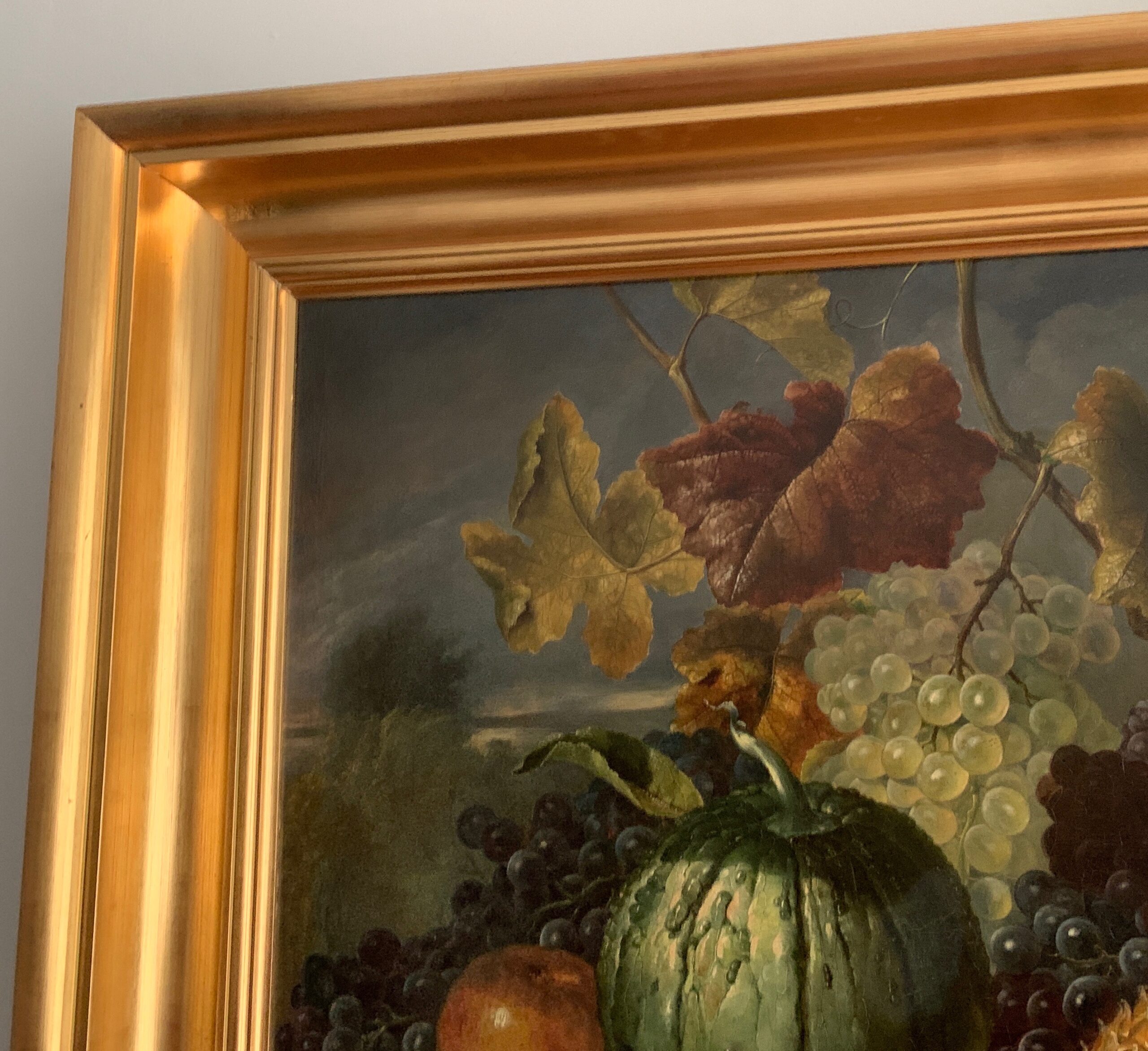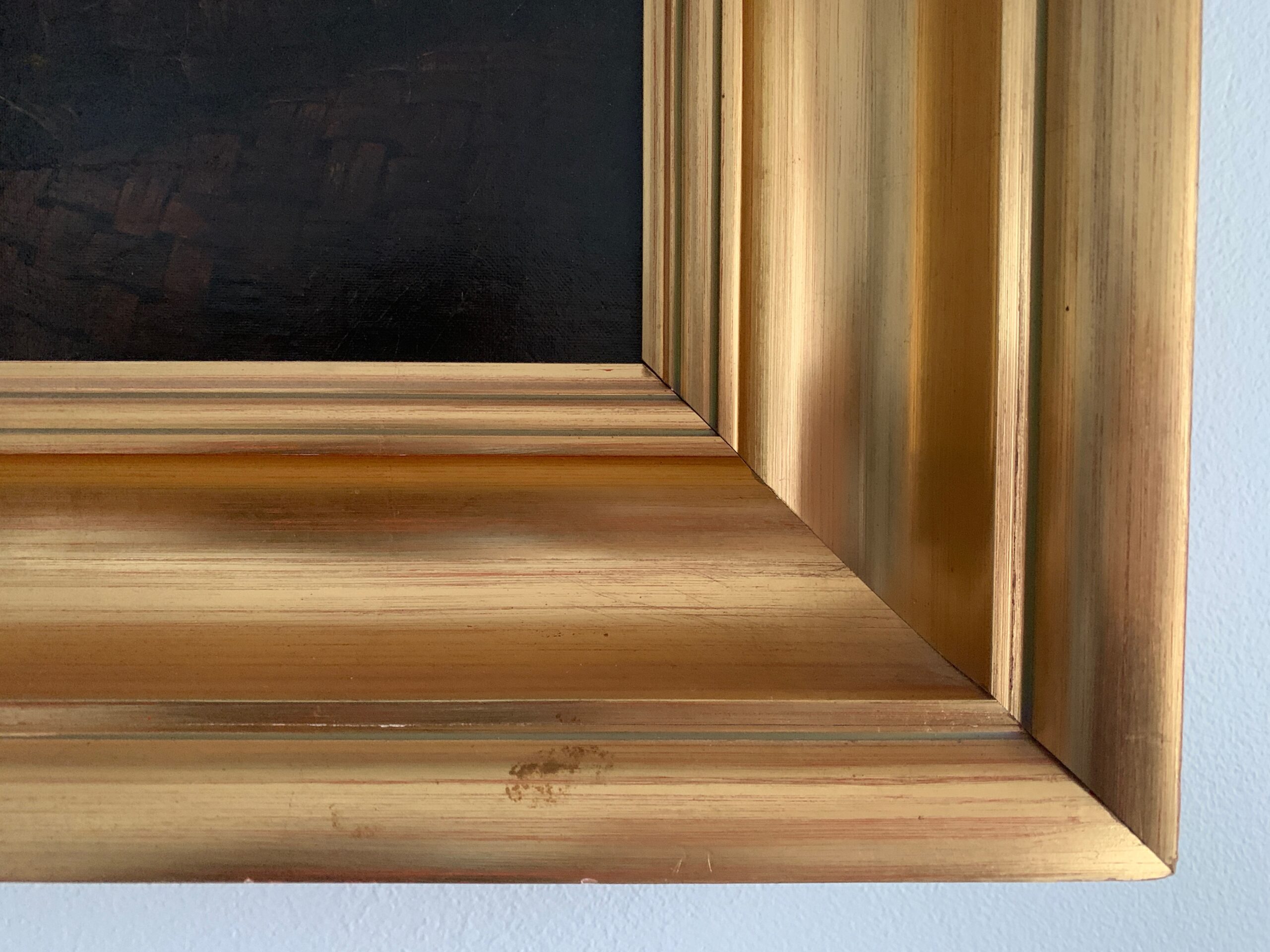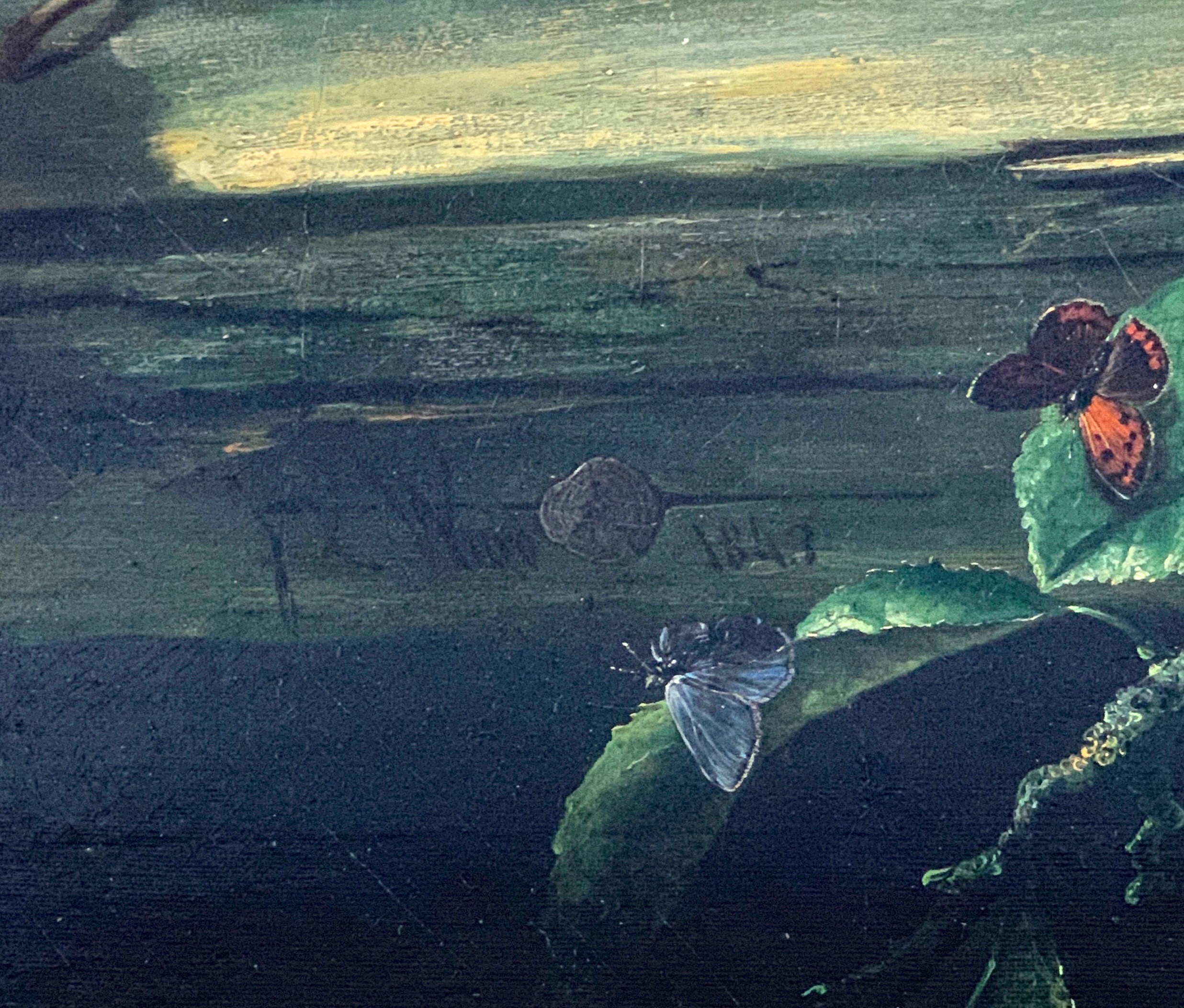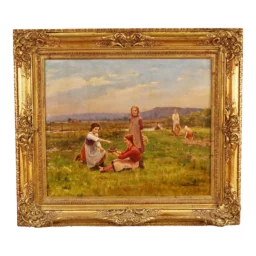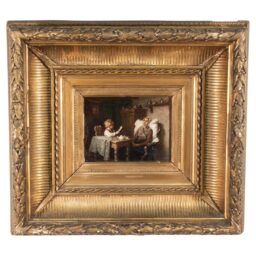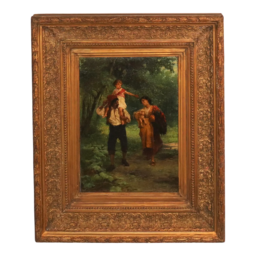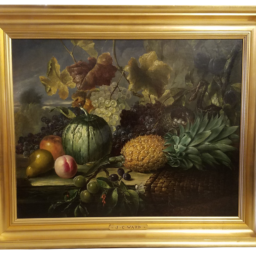Description
Recognized as a Royal Academician by the elite Royal Society of British artists, the London painter James Charles Ward enjoys a reputation as one of the most celebrated nineteenth-century artists. His favorite subjects include landscapes and still lifes; in his career, he also published numerous illustrated books of ships. His works have sold for upwards of $40,000, a price reflective of the superior technique that earned Ward his initial popularity as a painter from 1830 through 1875.
This oil on canvas piece, signed and dated circa 1843, depicts Ward’s most preferred subject: a decadent abundance of fruit painted in an autumnal palette. A woven tablecloth, illustrated in heavy shadow at the bottom right, seems to invoke the image of a cornucopia, a classical symbol of abundance. Certainly, the fruits that adorn the table are notably exotic for an English painter: consider the golden pineapple that occupies the center of the canvas, or the blush-toned peach painted in the green shadow of an artisanal pumpkin. And yet perhaps the most interesting aspect of this piece is not the autumn feast but a slight Biblical figure occupying the top right: the serpent. Poised as if to strike the clutch of eggs nested between black grapes and the pineapple, the serpent only seems to emerge from the foliage upon closer inspection of the painting, a subtle detail that nonetheless transforms the tone of the piece. Only after appreciating Ward’s Edenic tableau of fruits does the observer, like Adam and Eve, glimpse the serpent destined to ravage the bountiful calm. It is signed in the lower left near the bottom butterfly.
An artwork that lends itself to impressive introspection, this nineteenth-century oil on canvas would make a beautiful addition to any home library or study.
Dimensions with frame: H= 29 in., W= 37 in., D=2 in. , 20 lbs.
Dimensions of canvas only: H= 25 in. W= 31 in.
